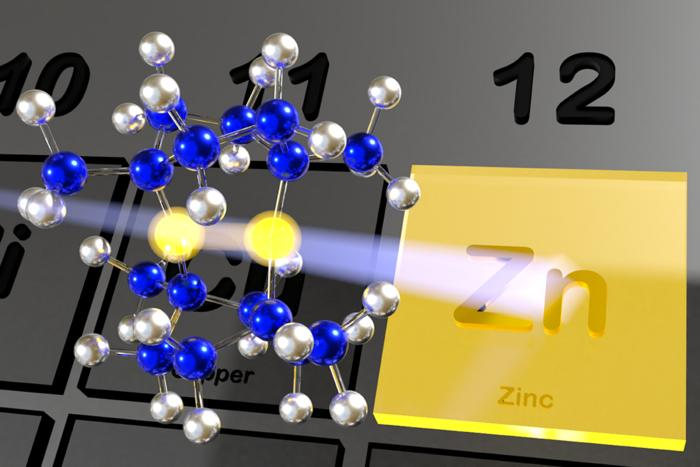Zinc, a crucial element with a widespread presence in biological systems, is cost-effective compared to other metals and boasts low toxicity. Unlike its metal counterparts that often display a range of vibrant colors in their complexes, zinc materials were traditionally not associated with color variation.
 Researchers from the Institute of Industrial Science, The University of Tokyo, synthesize a two-center zinc complex that absorbs visible light as a solid and in solution. Image Credit: Institute of Industrial Science, the University of Tokyo.
Researchers from the Institute of Industrial Science, The University of Tokyo, synthesize a two-center zinc complex that absorbs visible light as a solid and in solution. Image Credit: Institute of Industrial Science, the University of Tokyo.
In a recent study published in Angewandte Chemie International Edition, scientists from the Institute of Industrial Science at The University of Tokyo have successfully synthesized a complex involving two zinc ions that do indeed manifest color. This breakthrough significantly broadens the potential properties and applications of zinc complexes.
Vibrant color transformations are commonly employed to illustrate chemical reactions in an engaging manner, but they also find valuable applications in indicators, sensing technologies, and the development of smart materials.
In certain metal complexes, these color shifts occur because visible light possesses the right amount of energy to facilitate the transfer of electrons between orbitals, which are the regions within the atomic structure where electrons are located.
However, in the case of zinc’s most stable ion, the energy gap between its orbitals is considerably greater than the energy of visible light. Consequently, electrons cannot be transferred between these orbitals, thus preventing the production of color in zinc complexes.
Scientists from the Institute of Industrial Science at The University of Tokyo have demonstrated that introducing a second zinc atom into the equation can lead to the development of a material displaying a yellow color, both in its solid form and when dissolved in a solution.
The researchers meticulously crafted two molecules featuring silicon atoms, which served as ideal sites for the zinc ions to seamlessly integrate. These zinc-silyl complexes accommodated two zinc atoms, although they were positioned at varying distances from each other.
We used two systems to show that the zinc atoms work together to create a complex that absorbs light in the visible spectrum. In the first system the zinc atoms were relatively far apart—5.71 Å —and the material was colorless. While in the second system, they were much closer together—2.93 Å —and the zinc material was yellow.
Yoshimasa Wada, Study Lead Author, Institute of Industrial Science, The University of Tokyo
In the scenario where the zinc atoms were situated in closer proximity to each other, they could merge their orbitals, making the energy required for their electrons to reorganize fall within the visible spectrum. This, on a broader scale, resulted in both the solid and the solution of the second complex displaying a distinct yellow color.
The observed interaction between the zinc centers broadens the potential properties of zinc complexes. We believe our findings will open up a whole new family of interesting materials.
Yusuke Sunada, Study Senior Author, Institute of Industrial Science, The University of Tokyo
Zinc can now boast the addition of visible light interaction to its already extensive list of valuable properties. Considering the widespread presence of zinc in biological systems and its low toxicity, this breakthrough could potentially unlock new applications for zinc in fields such as biosensing and biocatalysis.
Journal Reference:
Wada, Y., et al. (2023). Visible Light Responsive Dinuclear Zinc Complex Consisting of Proximally Arranged Two d10‐Zinc Centers. Angewandte Chemie. doi.org/10.1002/anie.202310571.